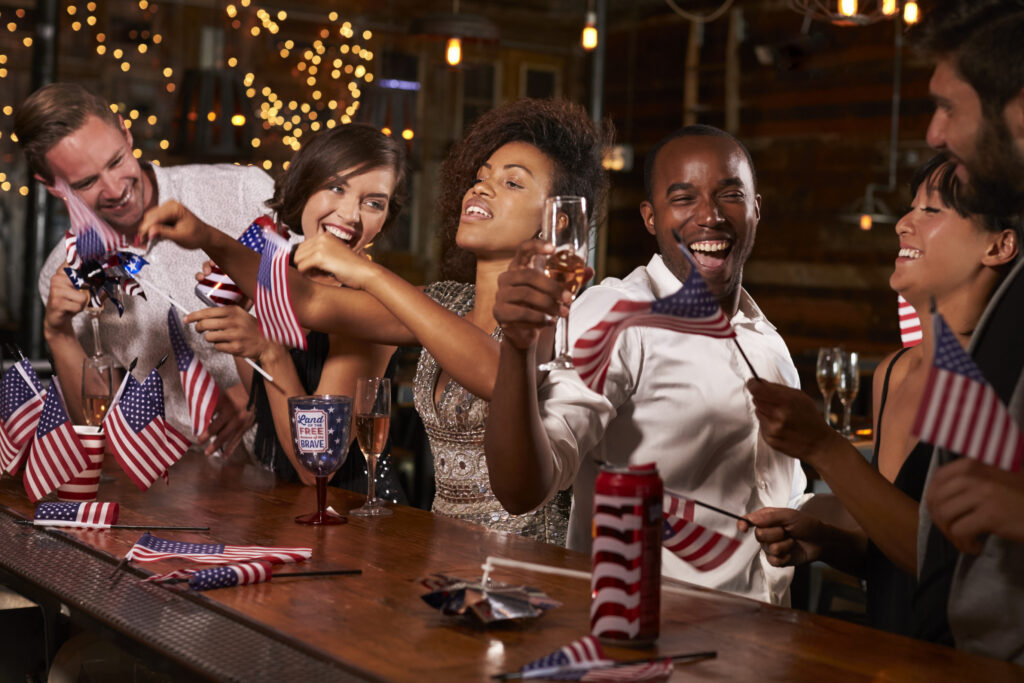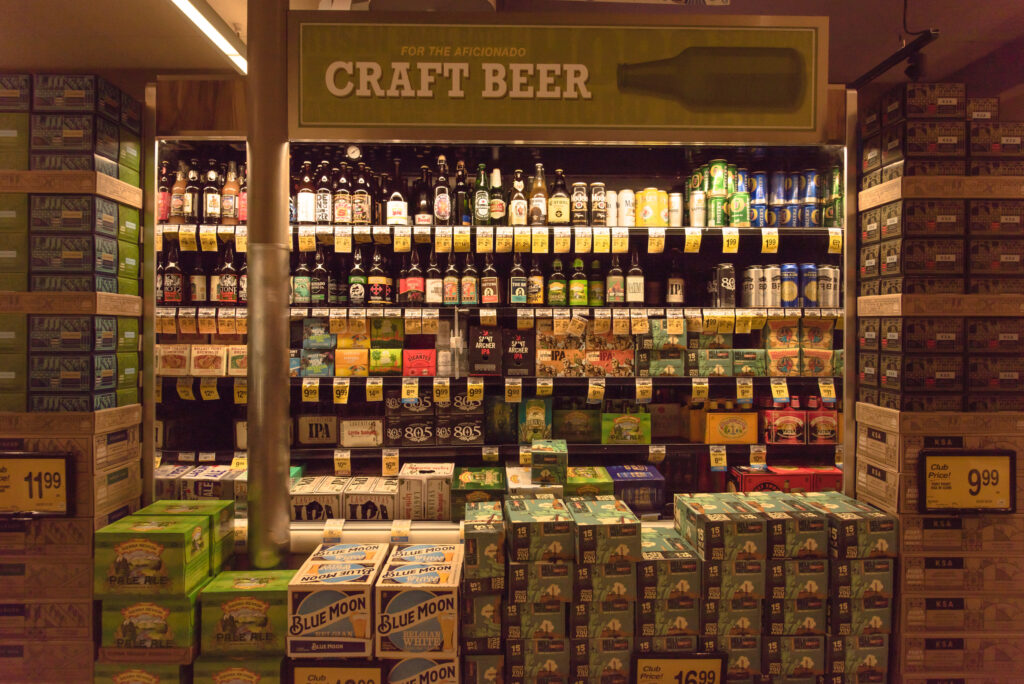
By: Nan McCreary
Long dominated by men, the spirits industry is attracting a growing number of females, not just as entry-level employees but as master blenders, tasters, distillers and even as owners. One of these new rising stars on the scene is Devin Walden, who was recently named the master distiller at Tropical Distillers in Miami.
Walden, a native of Kentucky, was not looking for a career path in the spirits industry when she took a job as a temporary employee on the bottling line at Woodford Reserve Distillery, a small-batch bourbon distillery in her home state. “I was a tattoo artist, had a second job bartending, then took on a third job at Woodford. My plan was just to stay long enough until I had built up my tattoo business,” Walden told Beverage Master Magazine. “I didn’t know much about a distillery, but I immediately fell in love with the whole process. I was fascinated by it.” In fact, Walden was so enthusiastic about distilling that she set out on a quest to learn the trade from the ground up, eventually becoming Woodford’s first female distillery operator. “This experience gave me a true appreciation and love for the industry, and I ran with it,” Walden explained. She was 24 years old at the time.

After three years at Woodford, Walden accepted a position with Total Wine & More in Lexington, KY so she could learn the retail side of the business. She also served on judging panels of various wine and spirits competitions, such as the American Craft Spirits Association Competition and USA Spirits Ratings. “My position at Woodford Reserve helped set up a framework for the technical and production skills I needed while my position at Total Wine and the judging experiences were great for learning what’s important to consumers and what they’re looking for,” Walden said. “In this industry, it’s valuable to understand both the production and the marketing side of the business.”
And that’s exactly what Tropical Distillers was looking for in a master distiller when they announced plans to open a distillery in Miami in 2021. “Total Wine had transferred me to Florida, and while here, I started missing being in production,” Walden remembered. “That’s where I thrive, and that’s what I’m passionate about. When I came across the Tropical Distillers opportunity, I was happy to jump on board.”
With Walden at the helm of the distillery operations, Tropical Distillers recently celebrated its grand opening as the only distillery in the city of Miami. Located in the heart of the up-and-coming Allapattah neighborhood, the distillery offers “a one-of-a-kind premium experience just steps away from the famous Wynwood Arts District.” Currently, the distillery produces the company’s signature brand J.F. Haden’s Craft Liqueurs, known as America’s Craft Liqueur Company™, and nationally recognized for its mango liqueur and citrus liqueur.

Tropical Distillers also plans to create its own brand of spirits, including vodka, rum, whiskey, gin and agave, which will be offered in the tasting room and with cocktails at the bar.
For Walden, teaming up with a completely new operation is both an exciting opportunity and a challenge. “I have a good foundation from my earlier experiences, but working on the ground floor at a start-up facility has introduced me to new aspects of the business,” she said. “My role starting out has been to focus on things like permits, equipment and sourcing materials like glass and ingredients. This side is new to me, but it’s a great learning opportunity.” Once production is in full swing, Walden will oversee and handle the small-batch production process of J.F. Haden’s Craft Liqueurs and the Tropical Distillers’ new line of spirits.
The role of master distiller is not one that Walden expected to have. “The position traditionally is handed down from generation to generation within families, or sometimes it’s an intern or apprentice role,” she told Beverage Master Magazine. “It’s not an easy title to come by. I was lucky, I was in the right place at the right time with the right skills.” While Walden initially came to the job solely with her work experience and a self-taught education, she subsequently enrolled in the Distillation, Wine and Brewing Studies program at the University of Kentucky. “For the longest time, you could only learn the trade by working in a distillery,” she added, “but now there are more schools and organizations offering classes and education.”
In a brief four years (she is 28 years old now), Walden feels she has gone from one extreme to the other in her distilling career. “The processes at Woodford were very regimented, but here I have more leeway,” she said. “I’ll always keep my framework from Woodford, but now I get to see where I can push it creatively.” Walden’s goal is to craft unique products that are not like what everyone is making. This means experimenting with different factors, such as proof, formulas, distillation, aging and filtering for making spirits. It also means recognizing the uniqueness of flavored liqueurs and finding ways to make them innovative while staying authentic to their flavors and ensuring high-quality products exclusively from their distillery.
Walden describes her job as “cross-functional,” where she takes on many roles. “One day I could be distilling, another day coming up with new formulas,” she said. “Here, there is a little more variation than at a bourbon distillery because we have so many different products and can experiment with more ingredients.” Creating new formulas for liqueurs is a lengthy process that involves a lot of trial and error, using different ingredients and altering the proof and sugar content. “Working with the array of products we make is definitely different but very exciting,” she added.
To Walden, landing the job as master distiller offers a unique opportunity to engage in multiple facets of the spirits business. “The role of master distiller is great because while you’re the lead distiller, you’re also an ambassador for the company, so you have some involvement with marketing and branding. For me, making products and coming up with new products is what I really love to do, but at the same time, you have to consider what other people like. So, also being involved in that side helps me better understand what our customers like and are looking for. It is the best of both worlds.”

Clearly, Walden can count herself among the up-and-coming female trailblazers in the spirits world. But it hasn’t always been easy. In her journey from complete novice to master distiller, Walden has had to overcome prejudices because she was so young and also female. “There was a time when people doubted me and my abilities and intelligence,” she reflected. “Sometimes, I felt out of place, and I wondered if I was the right fit for the job. Yes, I had to prove myself. And yes, I had to be my own cheerleader sometimes. But I’m blessed to say that I’ve also had a lot of great mentors and support from people who wanted me to succeed.” While Walden acknowledged that there is still some resistance to females entering distillery roles, she believes that women who came before her have helped break down barriers. “Today, there are more and more distilleries that are giving lead roles to women, not just master distiller, blender or taster roles, so the number of females in the industry is definitely increasing,” she added. “I think we’ll see more of this as long as organizations maintain diversity as a priority when building a team.”
No doubt, we’ll be hearing more about Walden as Tropical Distillers launches new products and becomes a go-to destination for tourists and locals alike. The 8,000-square-foot space features a full distillery, bottling line, in-house cannery and a tasting room decorated with colorful vintage wallpaper and old-school Florida, tropical touches throughout the space. Also, the distillery boasts a gift shop with branded merchandise, premium tastings, cocktail classes and behind-the-scenes tours. Between Devin Walden’s talent and history and Tropical Distillers’ splashy new digs and premium products, this new partnership offers a shiny new star in the spirits industry. Stay tuned for more.
For more information on Tropical Distillers, visit www. tropicaldistillers.com









